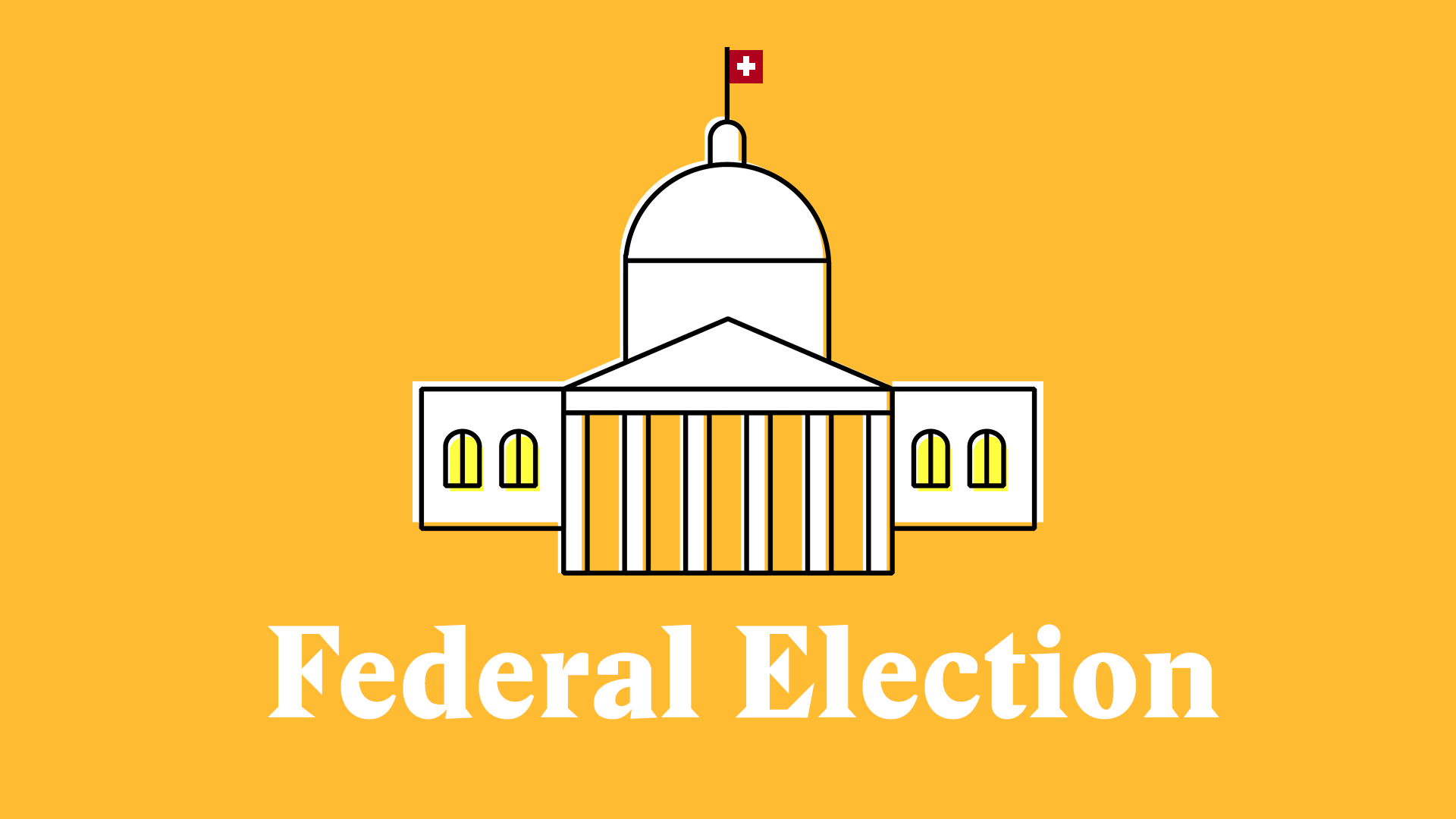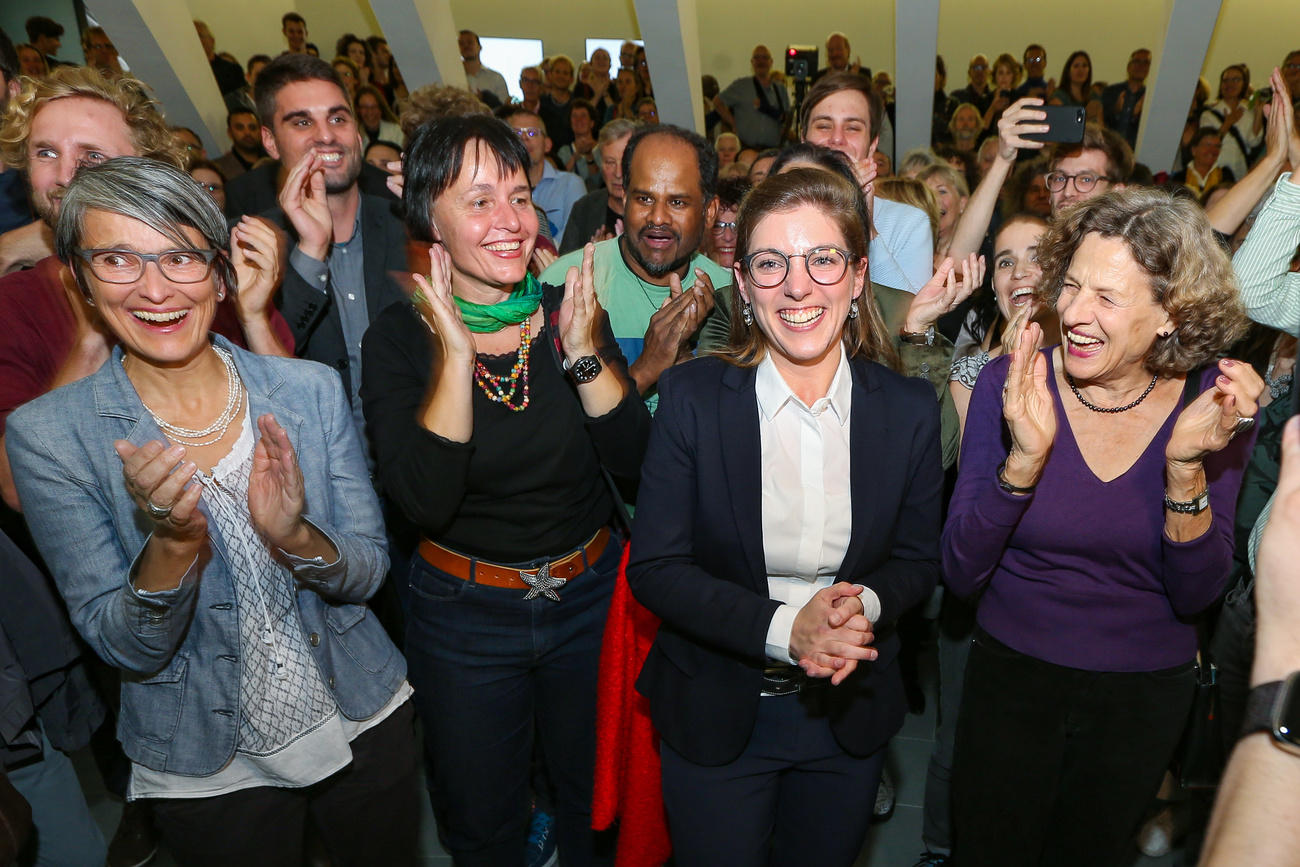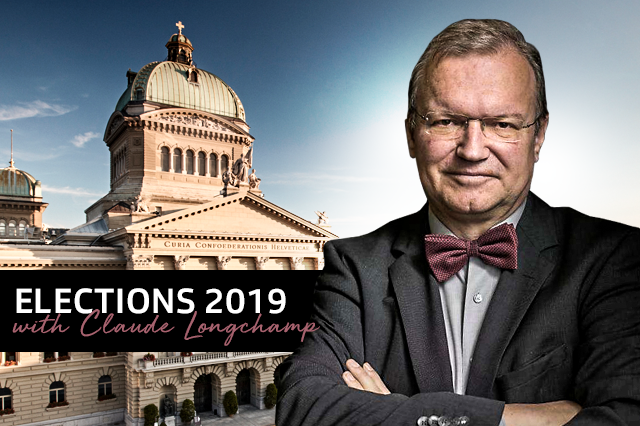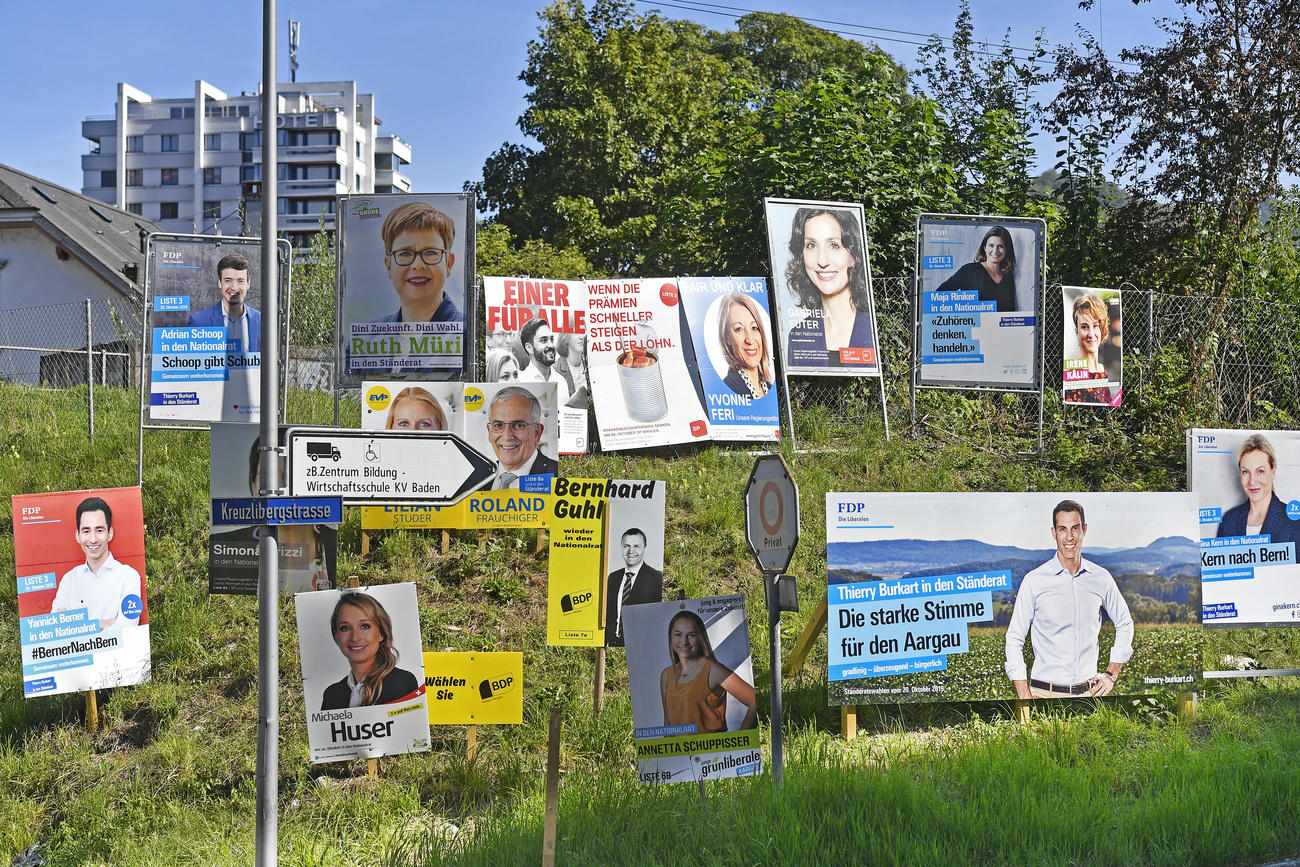When the world is in a fever, stable Switzerland feels it too

Not much has been written so far about the historical significance of the recent Swiss elections. Yet a look back in history can help us understand the nature of the parliament that has just been elected.
Since the 1990s, the usual pattern has been polarisation. The right-wing Swiss People’s Party, the left-wing Social Democrats or the Greens would add to their support, either simultaneously or in turn. The two ends of the political spectrum diverged more and more.
This time both People’s Party and Social Democrats lost out. The trend also affected the Radical Liberals. Only the Christian Democrats managed to hold onto their traditional vote, more or less. In fact, all the governing parties saw their share of the popular vote go down.
The Greens and Liberal Greens, two parties not represented hitherto in government, added considerably to their popular vote.
Claude Longchamp is one of Switzerland’s most experienced and highly-regarded political scientists and analysts.
He founded the polling and research institute GfS BernExternal link which he headed until his retirement. Longchamp has analysed and commented on votes and elections on SRF public Swiss television for 30 years.
Longchamp, a historian and political scientist, also runs the German-language blog ZoonpoliticonExternal link.
This text is part of #DearDemocracy, a platform on direct democracy issues, by swissinfo.ch. Contributors, including outside authors, frequently share their views. The opinions expressed here are not necessarily those of swissinfo.ch.
All in all, this was the most volatile election since proportional representation was introduced in 1919.
Challenge from parties not in government
The contrast is most striking when when we consider the vote by age group. 21% of under-25s voted for the Greens, and 14% for the Liberal Greens.
The four parties in government won just half the young vote.
The story is just about the opposite when we look at seniors. With them, the governing parties continued to enjoy an unassailable position, winning more than three quarters of the total vote.
More European
From a European perspective, this is nothing very surprising. Since the world financial crisis in 2007/8 Europe’s opposition parties have grown stronger and have been putting governing parties on the defensive. In the 2019 European parliamentary election the dominant Christian and Social Democrats came off worst, and European centre parties, Greens and right-wing populists all enjoyed a surge.
Here too, traditional major parties are out, new and reconfigured political groupings are in.
This pattern is really not new for elections in Switzerland, as a look back over past elections shows.
The biggest upset years for political parties (without change to electoral law) were 1935, 2011 and 2019. In those elections over 13%, 15% and 17% respectively of the seats in the House of Representatives changed party, and each time it was a Swiss record.
Economic crisis and social fallout
In 1935, the first year of turbulence, the effects of the 1929 economic crisis were still being felt. The Wall Street crash had caused economic decline, unemployment and social distress. This prompted the rise of new parties – including of course the Nazis in Germany.
In Switzerland the four major parties all lost out in the election of 1935. The brunt of it was borne by the Radical Liberals, by the predecessor of today’s People’s Party and by the predecessor of today’s Christian Democrats. Even the Social Democrats, who were the strongest party in Switzerland since 1931 although they were in opposition, were net losers on this occasion.
Gains were made by small parties of the time like the National Alliance of Independents, Conservative free-marketers, Young Farmers and extreme right-wing Frontists.
There was raucous debate after that about a new system of government. The first steps were taken towards the present-day “magic formula” with the four main parties.
Pulling the plug on atomic energy
The second comparable upset happened in 2011. It all started because of the Fukushima nuclear accident in Japan. It was apparent that atomic energy had outlived its usefulness. In Switzerland too there were strident demands for withdrawal from nuclear technology. The government took the initiative and decided to phase out atomic energy. The women in cabinet – there were four of them, a majority – were the ones who determined this new course.

More
It’s the first time that…
In the elections of 2011, however, all parties represented in government suffered badly. The worst loss was sustained by the Radical Liberals, who couldn’t make up their minds on the key issue. Social Democrats lost the least in terms of votes.
The real winners in this election were newcomers: the Conservative Democrats, who put up a slate of candidates for the first time in 2011, and the Liberal Greens, who were running candidates for the second time. Both of these got more than 5% of the popular vote, with the Liberal Greens capturing many young voters.
Climate change underestimated
The third notable disruption occurred this year. By the time the results were in for the Zurich cantonal parliament election in March, it was quite clear that remarkable shifts were under way. In the country’s most populous canton, things went well for the Liberal Greens, and the Greens too. People’s Party, Radical Liberals and Social Democrats all lost out.
The reason was clear enough: protest on the streets about lack of progress on the climate change issue had reached a peak that Spring with the school strikes and demonstrations.
This time People’s Party losses broke a record. Social Democrats and Radical Liberals also took a beating. Christian Democrat losses were fairly slight. On the other hand, the Greens enjoyed a record success, followed by the Liberal Greens. One could indeed speak of a “historic” election.
Worldwide tremors
What can we learn from this? At the beginning of all upheavals in the Swiss political landscape there has been worldwide crisis, whether economic, technological or environmental.
These crises have an effect on Swiss elections, because this country, in view of its openness to world markets, cannot be an isolated backwater.
It is noticeable that the intervals between two such upsets are getting shorter. Major upsets are no longer unique events. They are tending to become the rule rather than the exception.
That has an effect on the stability of the political system. The political landscape is changing.
Representation of the employers and the trade unions in parliament is being questioned. That is sure to have an effect on the system of government.
The magic formula for the government is meant to last, reflecting a stable political landscape, with entrenched parties and accepted representatives for particular interests. Neither is the case now – more so than at any time in the past 100 years.
That remains the problematic legacy of the 2019 election.

More
Why this Swiss election will go down in the history books
Adapted from German by Terence MacNamee/urs

In compliance with the JTI standards
More: SWI swissinfo.ch certified by the Journalism Trust Initiative











You can find an overview of ongoing debates with our journalists here . Please join us!
If you want to start a conversation about a topic raised in this article or want to report factual errors, email us at english@swissinfo.ch.